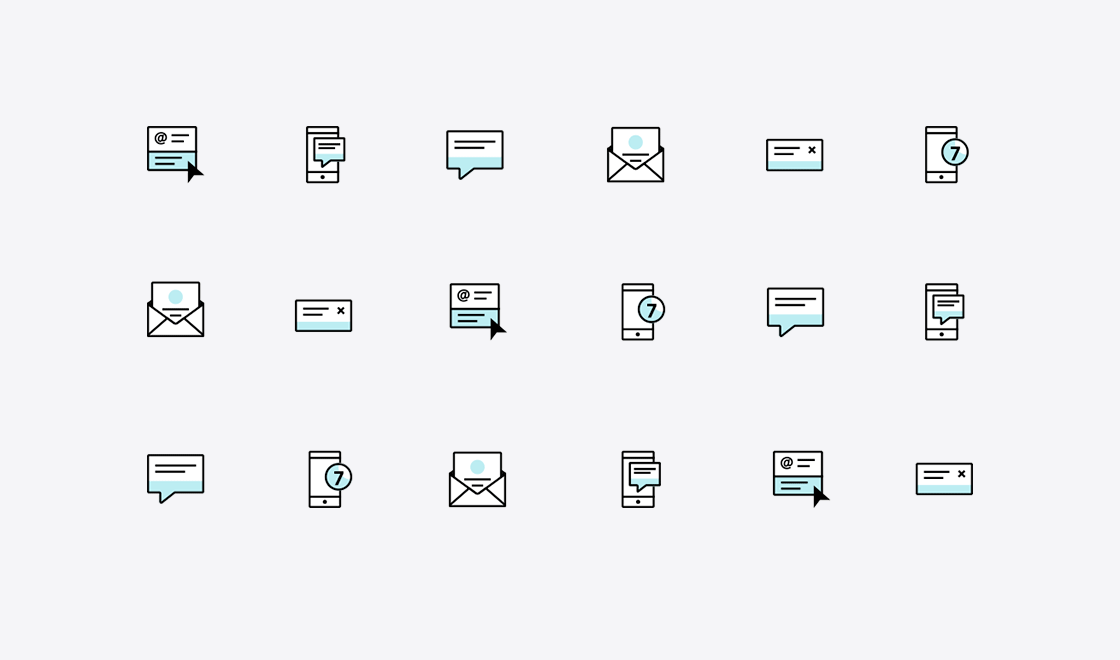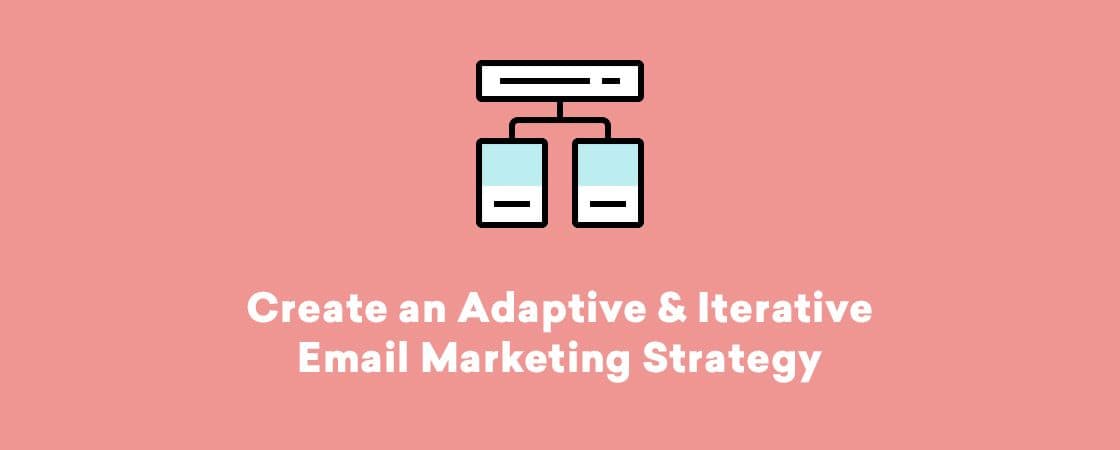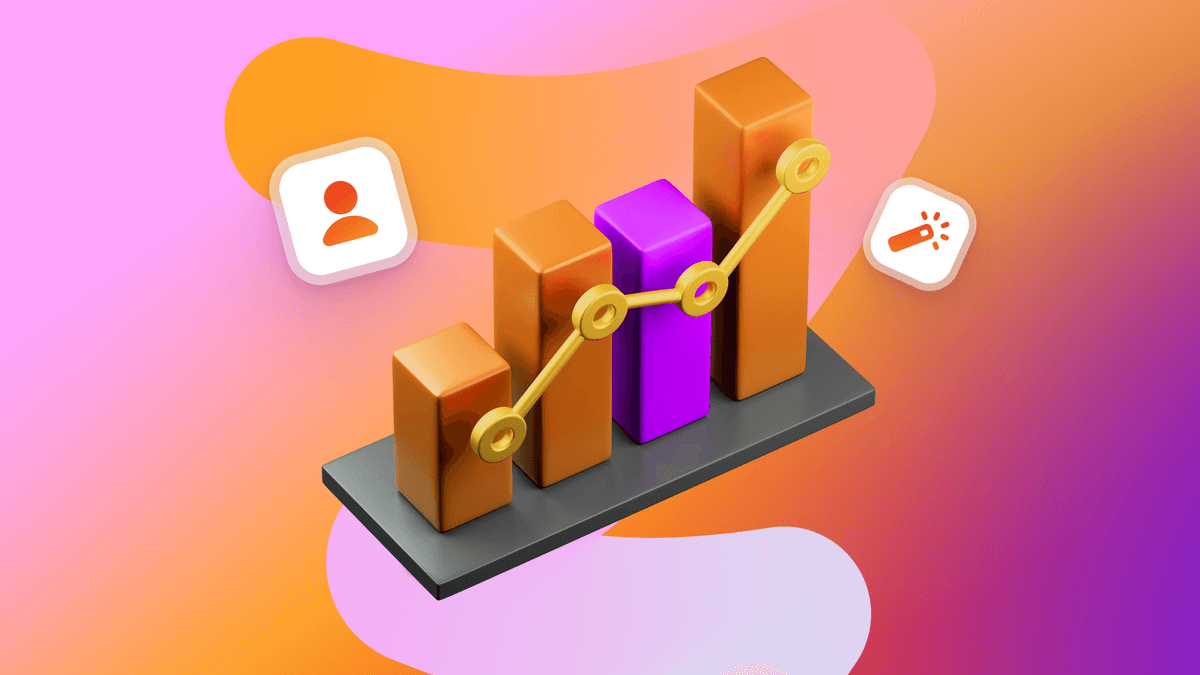Next-Generation Email: Standing Strong in the Age of Inbox Infinity
Published on March 26, 2019/Last edited on March 26, 2019/14 min read


Kelsey Cottingham
Editor, Content Marketing at BrazeOpen up your smartphone. In the top right corner of many apps, you’ll see a little red or orange circle with a number in it. Those circles are known as badges, and they denote whether you have any messages, updates, or notifications waiting for you within an app or app folder. Okay, now count up the numbers in the circles. How many did you get?
I have 334. And that’s not counting a home screen full of push notifications OR my emails.
The concept of an inbox was once largely saved for email, a channel which—while powerful— is already incredibly crowded. The average email inbox has about 8,000 emails in it, and that messaging overload is only increasing. That’s a lot to manage on its own, but these days, your entire mobile device is a collection of inboxes. From your homescreen’s log of push notifications to your social media apps like Instagram and Facebook, to your chat apps like WhatsApp, and even your finance apps like Venmo. Oh right, and your actual email inboxes including your work email, your personal email, and that one you have just for entering sweepstakes (No? Just me on that one?).
We’re in the age of Inbox Infinity, a time when the coveted “inbox zero” is harder to achieve and even harder to maintain. And, if you are somehow keeping all your inboxes—or even just your email inbox—at zero, you’re probably not engaging with each message in the way the sender intended. Odds are, you’re opening some of those messages just to open them, or marking all as read. As if it weren’t already tough to get your customers’ eyes on your messaging, tech giants have also been making moves to help customers manage messages and how much time they spend on their phones. Apple has introduced features like Screen Time which helps people manage how often they are engaging with their devices, and Gmail has been leveraging AI more and more, bringing about features like sentence completion and message prioritization via the promotions tab.
Just because things are getting more crowded, doesn’t mean we should discount the importance of email. In fact, email is still an incredibly powerful tool. Braze proprietary research shows us that there’s a 45% lift in engagement when using email marketing vs a control group in which users receive no messaging. And if that’s not enough to convince you, Litmus reports that email marketing has a 38:1 ROI ratio on average. That means for every dollar in, that’s thirty-eight back in your pocket.
So what are the implications for email marketers out there? Two things:
- Standing out (for the right reasons) is harder and more important than ever
- Email is just one—important!—piece of your customers’ inbox collection. It’s time to start thinking about email as a part of a cohesive customer engagement strategy instead of a stand-alone channel
Today’s email marketers need to be constantly striving to build trust and add value to their customers’ inboxes. Done right, it can be a virtuous cycle. You prove to your customers that your messages will always add value. They trust that your messages will be worth their time, and they engage and become more loyal. You continue to provide messaging that they want to see. It feels simple, and in many ways, it is. The next generation is not so much about earth-shattering technological advances. It’s about understanding that email technology is shifting to serve the customer (not just brands) and embracing a mindset and framework that allows for that as you evaluate your technology, build your campaigns, and work with your teams. Here’s our take on the next-generation email mindset:

Build for the modern email inbox
It’s time marketers recognize that email is evolving. It’s becoming more sophisticated, and your teams should be taking advantage of all it can support. Next-generation emails are personal, responsive, and up to snuff on the latest provider standards like Google’s promotions tab content and suggested unsubscribe features, as well as AMP for email.
Dynamic Content & Responsive Design
You need to be providing value at every step of the customer journey. That includes your emails. The days of batch-and-blast messaging are over (at least for successful marketers), and delivering personal messages that provide value to customers as individuals doesn’t have to be a huge lift. With dynamic content, marketers are able to pull in information specific to an individual from outside data sources via API. This means that instead of having to create several (or even, like, hundreds) of email templates and segmenting them out based on purchase behavior or other criteria, you can build a single template, include an API call for a specific element you want to personalize like the weather in your customer’s area or a photo of the item they just purchased, and voila! Personalized emails, at scale. The results will speak for themselves. Brands using dynamic content see as much as 25% increases in email open rates and 114% increases in email conversion rates.Emerging Technology Support
The email inbox is changing. And email platforms like Google are constantly innovating to find new ways to help users prioritize their inboxes. One of the more recent iterations is the Google promotions tab in which Google’s AI determines which emails are most likely to be engaged with and gives them some prime, top-of-inbox, image-rich real estate, regardless of chronological order. To be able to move quickly to take advantage of these innovations and stay ahead of the email-marketing crowd, you need an email provider with strong relationships with inbox providers and other partners.

Create an Adaptive and Iterative Email Marketing Strategy
Another key part of building a successful email strategy is letting go of the concept of an email-only strategy. There’s a whole suite of channels you can and should be leveraging to engage with your customers throughout their journey. Channels like push notifications, web push, in-browser and in-app messages, and more. When you’ve got the right technology and the right team behind you, creating these adaptive, cross-channel experiences is a breeze. Plus, remember that stat from earlier? The one with the 45% lift in engagement when you use email communication? Well, when you combine that with another channel, that lift jumps up to 315%!
Visualizing the customer journey
It’s important to visualize the entire customer journey—literally and figuratively. Before crafting any campaign, you’ve got to understand what you want your customers to get out of it, what you want their next action to be. Is it filling out a customer profile? Is it completing a purchase? When your marketing technology is built to have a live view of a customer across all channels, it’s easier to also plan for steps to take if your customers don’t engage in the way you want them to. Will you opt them out of the campaign so they don’t receive a bunch of emails they won’t open (and ultimately that will hurt your sender reputation)? Will you follow up with them on a different channel? There’s a world of options, but having a visual customer journey tool makes it easy to build triggered, lifecycle, and automated cross-channel nurtures.
Global Campaign Settings
Sometimes the best type of message to send is no message at all. If your email campaigns are operating in a silo from your mobile or web campaigns, you’re liable to start overwhelming your customers with messages simply because your right hand isn’t aware of what the left is up to. When you’re able to set rules like frequency caps and to see the entire customer journey in one place, you’ll be able to get your customers the right information, providing constant value, while respecting their boundaries and needs.
Adaptive & Real-Time Messaging
Think of your channels as a volleyball team. There’s no “offsides” call in volleyball—each person needs to be able to rotate into all six positions with ease, but each player also has their sweet spot. Maybe they’re a great setter. Maybe they own the back-center position. Maybe their serves are unbreakable, and, when it’s game point and you need a ringer, that person is subbed in. But when someone has already hit the ball and needs an assist over the net, another teammate will come to the rescue, even if it’s from across the court. Your channels can work together in a similar way, supporting one another by flexing their strengths, or by coming to the rescue when one channel can’t quite get it over the net, if you will.
Email marketers need to embrace the concept of a fallback channel (or rescue channel or just plain complementary channel). At the end of the day, it’s important to remember that an ignored or deleted email isn’t just a waste of money and resources, it can actually be damaging to your sender reputation. If a customer historically doesn’t engage with your emails, you want a system that is going to help you adjust to that behavior and send a different type of message to that customer. Let’s say someone always clicks on shipping confirmations and tracks their packages, but rarely opens sale and offer emails. Your technology should help you map that out and segment your users in such a way that they only receive the emails that are going to add value to their lives. As for the other messaging? Find another channel that better suits their style—like push or in-app messages.
Testing, Reporting, and Analysis
Once you’ve visualized your campaigns, you’ll want to make sure that you’re testing and measuring your success. Through A/B or multivariate tests, you can find out what types of subject lines, send times, images, personalization tactics, and more are contributing to the success of your campaigns. Plus, if you’re working with an email provider that’s built on live data streaming, you should be able to adapt your messaging to make sure that the best performers are in the majority at all times.

Deliver and be seen in the box
Sometimes you have to walk before you run. All of that dynamic personalization and responsive email capabilities won’t mean anything if your emails keep landing in your customers’ spam folders. Earning and maintaining a good email reputation requires a continuous dedication to cleaning, testing, and listening at every stage of your company’s—and your customers’—email journeys.
Don’t Skip the Basics
If you’re reading this article, your company is likely well into its email-sending journey. But it’s always good to be reminded of the basic best practices of email sending. There are plenty of measures that marketers can take to ensure their emails are trusted by the major inbox providers. Some of these best practices include:
- IP Warming: Setting up your IP address properly by gradually increasing your send while achieving high open rates is a top priority for newer email senders.
- Use of Subdomains: Using subdomains can help protect you in case your main domain’s reputation goes down. Also, using separate subdomains can help you to understand your sending reputation much better. Maybe your marketing@ domain isn’t doing well, but your offers@ excels! What can you learn from one domain and apply to the other? Is it time to sunset any of your domains?
- Keeping your email lists clean: This is an ongoing practice that smart email marketers should use to ensure that your reputation is strong. Keep your lists free of fake, mistyped, or otherwise disengaged addresses. Oh, and if they never opted into email… please don’t target them with email!
Stay diligent with Spam Testing
Spam Testing helps you identify if a given email would be caught in common spam traps and runs across major spam filters such as IronPort, SpamAssassin, and Barracuda, as well as major ISP filters such as Gmail and Outlook. A strong email provider should include the ability to easily test and assess your messages before sending by giving you a view of the message from your customers' perspective.
Customer preferences
This is probably the most important thing you can do on an ongoing basis to make sure your email reputation stays strong. From the very beginning of your relationship with your customers, even in their onboarding process, ask them about what kinds of emails and other notifications they’d like to receive. Targeting your emails based on what your customers have said they want to receive is a great step toward making the most of your emails (plus, sending them emails they haven’t asked for might be illegal depending on where your company or your customer is based).
Did you know there’s such a thing as a “read rate,” “deleted before reading,” or “ignore rate”? Well, according to Return Path, these rates can have an impact on your sending reputation—positive, or negative. Sending customers emails that they are interested in and engaging with is a great first step for that positive impact. Plus, if your customers are really engaged with your emails and suddenly notice that they’ve stopped receiving them (maybe due to a flaw in spam rules or some other fluke) you may even be lucky to get a boost in your “this is not spam” rate, a strong positive indicator that customers want to receive your messages to the point that they went on a search and rescue mission through the spam folder.

Embrace an Ecosystem of Support
It takes a village to run a successful email program. Or, at least, it takes a strong central technology, a few partner solutions, and a savvy team backing you up.
Support Through Technology
When you’re building your ecosystem of technologies to support your email marketing efforts, there are a few key elements to consider. The first, of course, is your central email provider. We’ve gone over a lot of the important things to look for in this technology—a central view of cross-channel campaigns that allows for thoughtful global settings and adaptive messaging, responsive design and testing capabilities to free up your teams for creativity and collaboration, and the ability to create emails built for the modern inbox, among other factors.
But even with the ideal email provider, you’ll want to consider partner technologies that will enhance your provider’s abilities. Some technology add-ons to consider for email specifically include email deliverability and orchestration. Email deliverability tools offer insights on sender reputation, deliverability, consumer engagement, and fraud protection; and email orchestration tools allow marketers to easily gather email addresses, enhance those responsive email templates, and localize content, all at scale. Make sure that your primary provider is built to seamlessly work with these partner technologies to create smooth, in-the-moment transfers of data and, ultimately, brilliant customer experiences.
Support Through Teams
Your internal and external teams should be working together to constantly improve upon your email marketing strategy. Internally, this means breaking down silos, democratizing data, and embracing technology that allows your teams to work better together. When you can accomplish this, your messaging channels will be much more aligned and your teams will have more space to be creative as they dream up future campaigns from their learnings.
Externally, remember that when you invest in an email and messaging technology, it should be more than some lines of code. Invest in a technology and a team that will invest back in you. Your solution’s team should be helping you to make the most of their product, to make your campaigns more modern and mature as you progress as a team, to scale up in a responsible way that won’t damage your sender reputation, and to position you as an exemplar email team.
Final Thoughts
Email isn’t going anywhere. On its own, it’s a powerful, effective tool. When it’s used to its fullest capabilities, within a cross-channel campaign—that’s where the real magic starts.
Embracing the next generation of email means not letting email live in a silo. It means making email personal and relevant, at scale. It means constant attention to detail—from spam tests to data analysis, to list cleaning, to keeping up with new services and trends and learning how to make the most of them (or ignoring them if they’re not right for you). Sometimes it means letting go of email, understanding that your customer would rather see your message in a push notification and adapting to that. Finally, it means having the freedom to try new things and use your internal and external teams’ creative and collaborative skills to their fullest. When you can do all of this, you’re positioned to continue building trust with your customers and adding value with every message you send.
Related Tags
Be Absolutely Engaging.™
Sign up for regular updates from Braze.
Related Content
View the Blog
How behavioral marketing turns data into personalized experiences

Team Braze

Are you AI-savvy enough to survive? A wake-up call for CMOs

Team Braze

What are contextual bandits? The AI behind smarter, real-time personalization
